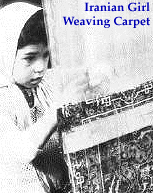The reason is simple: slavery wages
Those are the messages from two recent reports by the International Labor Organization (ILO), a U.N. agency. Many countries in Europe have lost half the jobs in these areas; in the United States alone, about one million shoe and clothing jobs have disappeared since 1980.
The reason is simple: slavery wages. A German shoe maker earned an average of $18.40 per hour, compared with $1.70 for a Mexican worker. In today's global economy, both workers compete for the same job. Guess who gets the work.
Because of NAFTA, foreign investors have poured money into about 8,000 Mexican clothing businesse
Adding to the problem is the exponential growth of clandestine workshops, according to the report. Counterfeiting name brand clothing is a huge business: 5 percent of the world's clothing is made this way. It's a safe bet that those illegal shops won't welcome scrutiny from inspectors.
Worldwide, sweatshops are popping up in the poorest countries. Since the fall of the Soviet Union, almost all of the former Eastern Bloc nations have become home to sweatshops making goods for the rest of Europe.
The only nation in North America with a booming sweatshop trade is Mexico. Now that NAFTA has made Mexico a privileged supplier of clothing to Canada and the United States, foreign investors have poured money into about 8,000 Mexican clothing businesses, according to the report.
But more than ever before, shoe and clothing sweatshops are found in Asia, where jobs trickle down on a three-level system. At the top are the richer countries: South Korea, Singapore, Hong Kong and Taiwan. These nations are now cutting production and investing heavily in other least-cost countries. As a result, between 1985 and 1990, the production of the Philippines, Indonesia, Thailand and Malaysia increased greatly and led the world market in exports.
And those second-tier countries have in turn begun to invest or redistribute part of their production to the poorest of the poor: Bangladesh, Pakistan, Sri Lanka and more recently Laos, Nepal and Viet Nam.
The problem of child labor is so enormous and the need for action is urgent, choices must be made about where to concentrate resources
Though certainly a step in the right direction, it's hard to imagine that it will have much effect now that the system is entrenched. But it's still an important effort: most of this work at home is done by children.
Some 250 million children between the ages of 5 and 14 are working in developing countries, nearly double previous estimates. Of this total, some 120 million children are working fullŠtime, and 130 million work partŠtime, according to the recent ILO report, Child Labor: Targeting the intolerable.
The ILO says that because the problem of child labor is so enormous and the need for action is urgent, choices must be made about where to concentrate available human and material resources.
"The most humane strategy must therefore be to focus scarce resources first on the most intolerable forms of child labor such as slavery, debt bondage, child prostitution and work in hazardous occupations and industries, and the very young, especially girls," the ILO report says.
Some 61 percent of child workers, or nearly 153 million, are found in Asia; 32 percent, or 80 million, are in Africa and 7 percent, or 17.5 million, live in Latin America.
Girls more often work in domestic labor; boys work in construction, fields and factories, leading to sexual differences in exposure to hazards.
Girls, because of their employment in households, work longer hours than boys each day. This is one important reason why girls receive less schooling than boys, according to the ILO. Girls are also more vulnerable than boys to sexual abuse and its consequences, such as social rejection, psychological trauma and unwanted motherhood. Boys, on the other hand, tend to suffer more injuries resulting from carrying weights too heavy for their age and stage of physical development.
"Working children are often not readily visible. It is a matter of 'out of sight, out of mind'"

The ILO wants to focus attention on the "invisibility" of endangered children. "One reason why modern societies and governments have not been more active in curbing the most harmful forms of child labor is that working children are often not readily visible. It is a matter of 'out of sight, out of mind,'" the report says.
The ILO is now calling for a new Convention that would add specificity and focus on the worst forms and most hazardous types of child labor, including slavery, servitude, forced labor, bonded labor and serfdom, and the measures taken to eradicate them.
